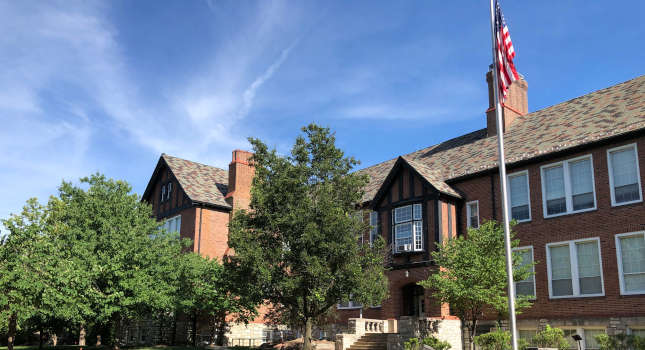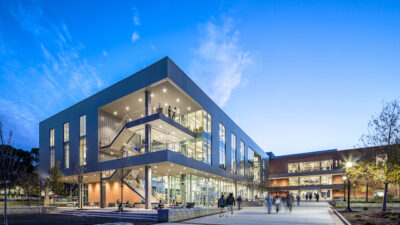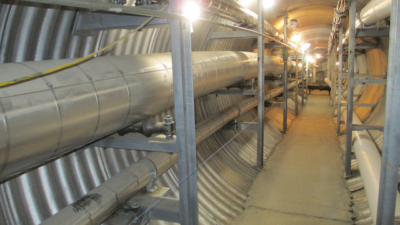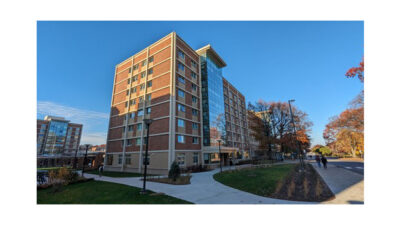Assembly Bill 841 (AB 841) is one of many ways schools and lawmakers are trying to safely reopen schools during the COVID-19 pandemic.

In addition to the regular challenges encountered each year, public school officials are trying to address the best ways to reopen and maintain safe classrooms by mitigating the spread of COVID-19 while also overcoming the ever-present challenge of a lack of capital improvement funding.
For many districts, aging infrastructure like HVAC and plumbing systems are a constant struggle to maintain, let alone replace, even during normal times. With facilities teams often being underfunded and understaffed, maintenance is typically deferred, which leads to a cycle of operating equipment until failure. This deferred maintenance means that equipment isn’t running optimally as designed, and in the case of HVAC systems, it means they aren’t properly heating, cooling, and – most importantly – ventilating spaces.
Improperly functioning HVAC equipment creates a host of issues – and when accounting for a pandemic and a lack of capital improvement funding, the list of problems grows substantially.
In California, public schools have different opportunities to address the challenges above. Particularly, while they are still able to access limited funding through the Prop 39 K-12 program and the Energy Conservation Assistance Act (ECAA) for energy efficiency and generation projects, they still face roadblocks with these programs such as meeting qualifying financial metrics for typical HVAC and plumbing infrastructure projects. These specific infrastructure projects do not have an attractive simple payback, making them a non-starter for a program focused on encouraging retrofits with traditionally quick paybacks like lighting upgrades.
With financial and technical complexities and an increased demand for programs to complete HVAC and plumbing infrastructure projects, California recently amended Assembly Bill 841 to provide new pathways to obtaining funds for these necessary projects.
What Is AB 841?
Assembly Bill 841 (AB 841) is a California state bill that was initially created to increase the use of electric vehicles (EVs) through the funding of a program to develop widespread EV charging infrastructure. Before the bill was approved, language was added to create the Schools Energy Efficiency Stimulus Program (SEESP) and was approved by Governor Gavin Newsom on September 30, 2020.
SEESP is a statewide grant-funded program for California K–12 public schools meant to pay for repairs and upgrades to HVAC systems through the School Reopening Ventilation and Energy Efficiency Verification and Repair (SRVEVR) program. The program also funds repair or replacement of plumbing appliances and fixtures via the School Noncompliant Plumbing Fixture and Application (SNPFA) program. Funding for the statewide SEESP will come from ratepayer funds already collected by California’s major utility providers through utility tariffs as directed by the California Public Utilities Commission (CPUC).
A minimum of 25% of the total program funding is reserved for school districts in specifically defined underserved communities, which will receive priority consideration. The program’s guidelines will be jointly developed by the major utility providers and will be presented for the CPUC’s approval in February 2021 with approval expected in March 2021. Similar to the Prop 39 program, SEESP, while funded and developed by the utility providers, will be administered by the California Energy Commission (CEC). The CEC will begin accepting applications on April 1, 2021 with approvals beginning May 1, 2021.
With details still being developed, AB 841 and SEESP offer a financial boost to many districts struggling to fund HVAC and plumbing projects. Bill language indicates that the program will not adhere to the same types of cost-effectiveness metrics that Prop 39 and other utility rebate programs typically require.
Standard programs vs. SEESP
Standard programs meant to encourage energy efficiency (like Prop 39) often require that a project save more money through energy cost savings over the expected life of the equipment versus the total cost to implement the project. For example, replacing an existing fluorescent lighting fixture with a high-efficiency LED lighting fixture might cost $200, but if that new LED fixture can save $30 a year in energy cost over 15 years, it will have saved $450 over its life, paying for itself more than twice over. In contrast, replacing a single rooftop HVAC unit might save $100 annually in energy costs ($2,000 over a 20-year lifespan), but with an estimated $8,000 cost, the project would not come close to paying for itself. Therefore, this specific example may not qualify for Prop 39 funding, but would potentially qualify for SEESP funding under AB 841.
The lighting project example exemplifies the types of projects that typical energy efficiency programs like Prop 39 are designed to fund. A program like SEESP is different and is meant to fund more capital-intensive projects dealing with HVAC and plumbing. These projects would not provide cost savings anywhere near paying for themselves over the equipment’s expected life, meaning that the traditional cost-effectiveness calculation is not applicable.
Planning ahead
Programs like SEESP that specifically target this type of infrastructure are exceedingly rare, and given the substantial need of many school districts across California, there is overwhelming demand for programs of this nature.
Whether located in an underserved community or not, all California school districts should begin taking steps to understand their HVAC and plumbing project needs in order to maximize the benefits of these programs in order to help safely reopen schools. Either through SEESP, as established by AB 841, or other alternative funding opportunities, districts will benefit from having a plan to address these projects, creating a roadmap to complete crucial work and ensure the safety of school buildings.
This article originally appeared on Southland’s blog, In the Big Room. Southland is a CFE Media content partner.



